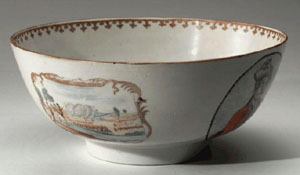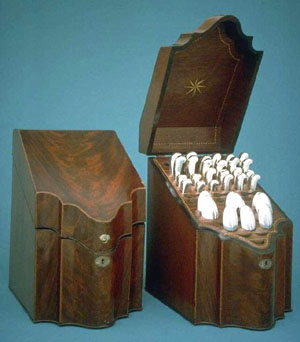The long eighteenth century saw the expansion of the middle classes, and a general increase in disposable incomes. This led to a growth in expenditure on consumer items within the house, the variety of which was ever expanding. Some were partly for show, such as clocks, pictures, punch bowls and barometers. But most, even if also status symbols, involved increased comfort or utility.
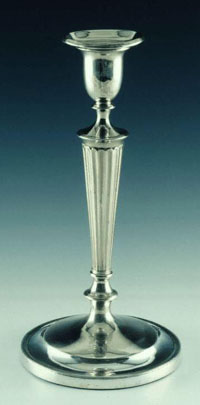
Silver candlestick, late eighteenth
century.
© SCRAN/National
Museums of Scotland
|
Chinese export porcelain
punch bowl, commemorating the Battle of Culloden in 1746. |
|
Cutlery box, from the Georgian
House, Edinburgh. |

Barometer, made in Edinburgh
c.1800.
© SCRAN/National
Museums of Scotland
With the introduction of the Argand lamp
in 1784 lighting was greatly improved. Mirrors to reflect the light
of candles or lamps also became more common. First carpets and later
curtains helped keep houses warm. Wash-stands became increasingly common
features in bedrooms, for those with servants to fill and empty them.
Crockery, cutlery, umbrellas, door-mats, kitchen utensils, the list
of new objects on sale to the middle class domestic consumer, particularly
in leisure towns,
is long and varied.
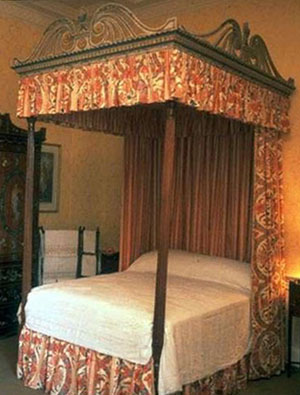 |
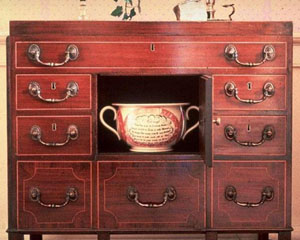 |
Furniture changed fast. Mahogany and other
decorative woods replaced the plain oak and pine used in the seventeenth
century. Upholstery was introduced, and new pieces of furniture such as
sofas and dressing tables. Beds had curtains, feather or wool mattresses,
and finer sheets and blankets. Because transport costs were high, there
was a strong second-hand market. Much consumer spending was in the hands
of women, who had acquired greater control within the home.
Interior scenes
are rare, but there are a few which help to give us an insight into how
lives were led. This can be reinforced with evidence from literature,
including the novels becoming increasingly fashionable at this time.
